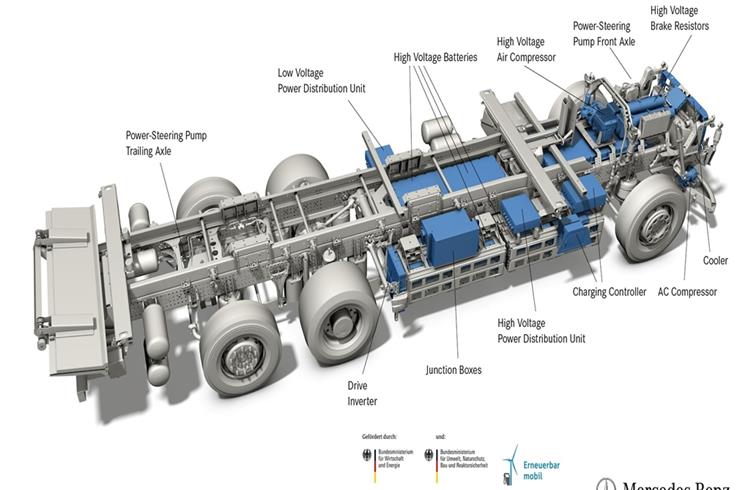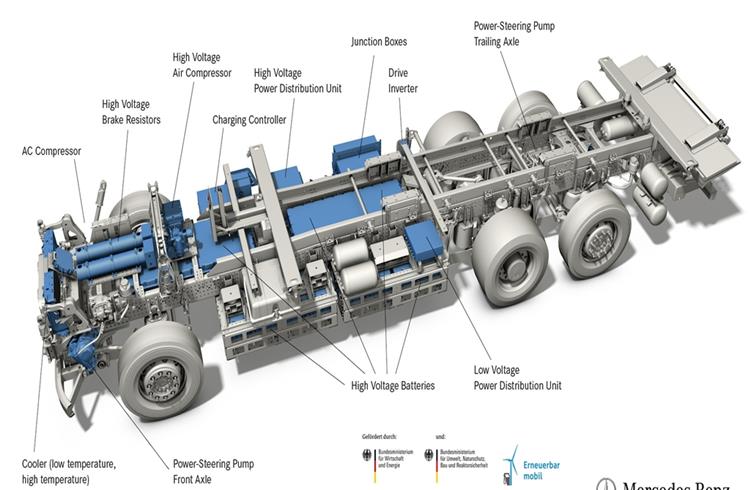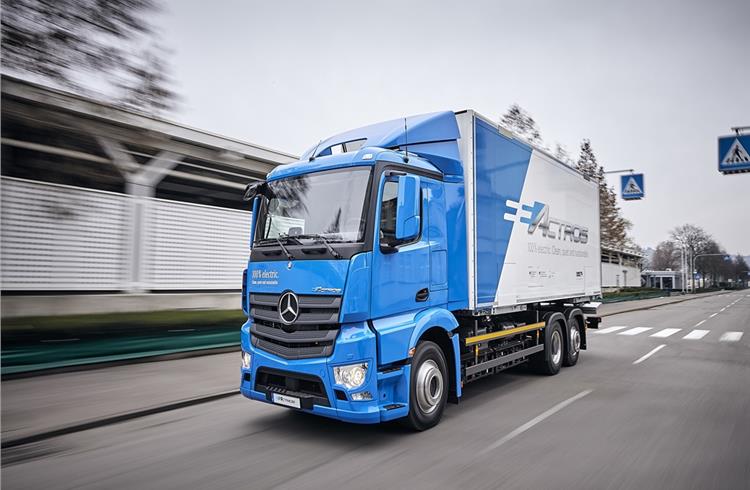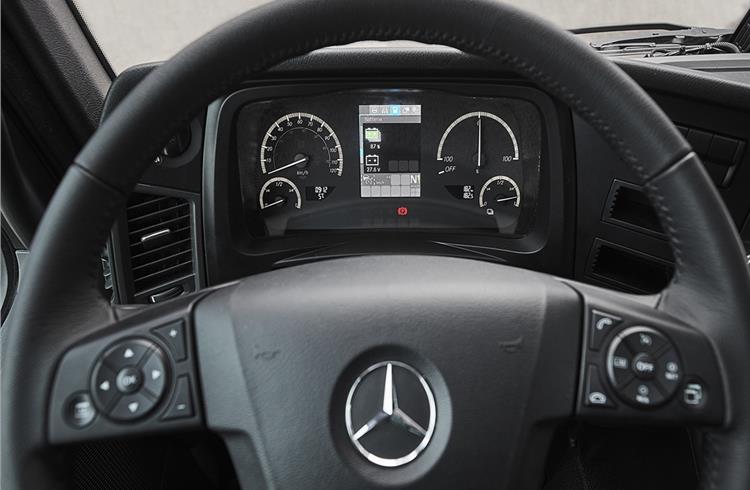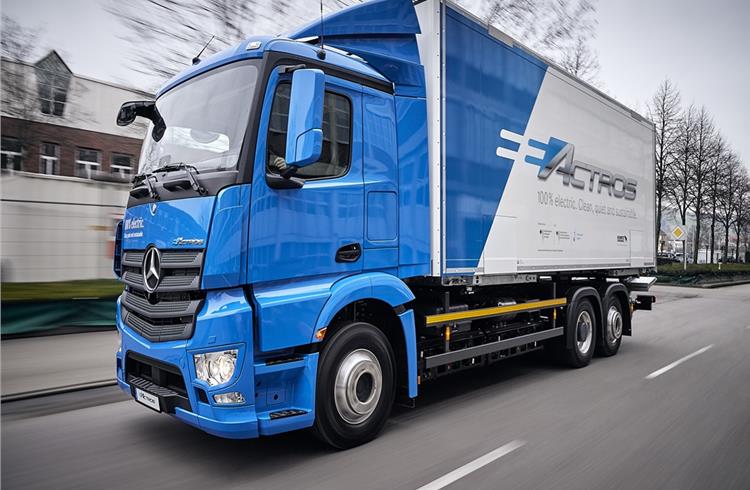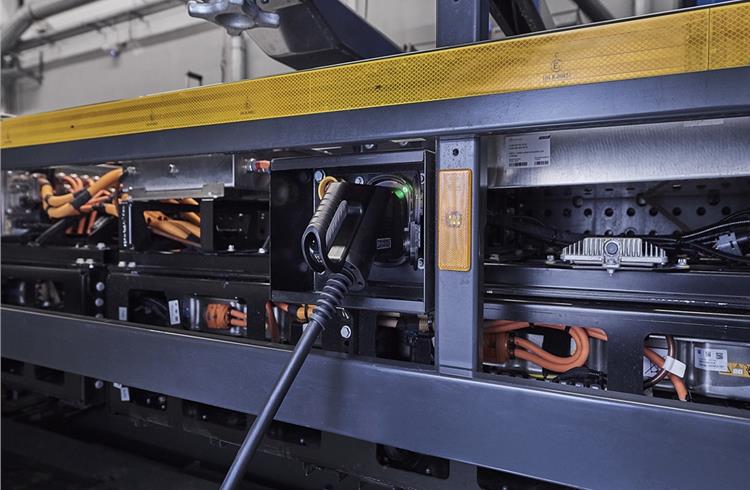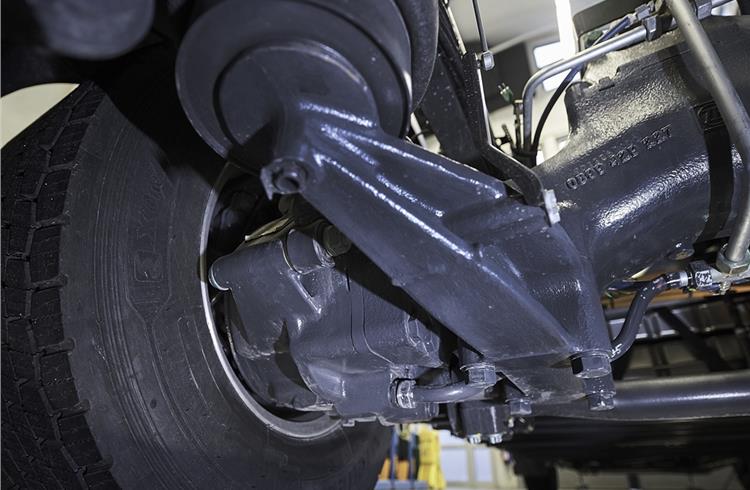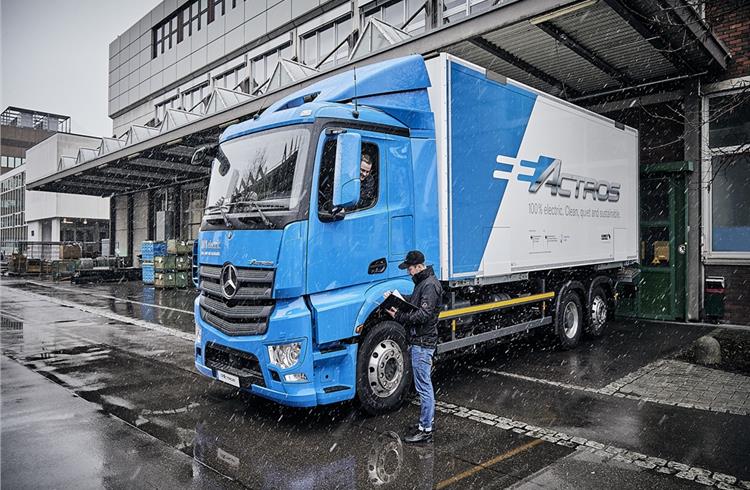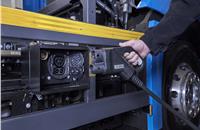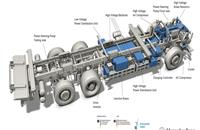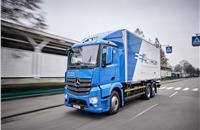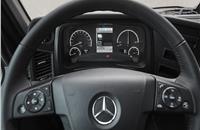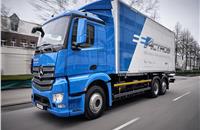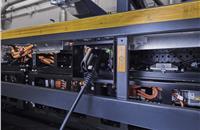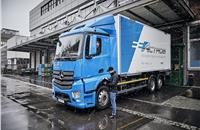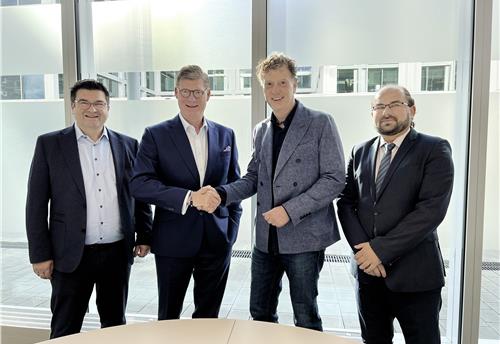Mercedes-Benz Trucks to begin delivery of eActros
Ten eActros in two variants will be delivered to the pilot customers for testing the electric heavy duty truck for a period of 12 months after which they will be given out to the second round of customers for a period of another 12 months.
In 2016 Mercedes-Benz Trucks became the first manufacturer in the world with a heavy-duty electric truck. The company will now put its electric truck, the eActros, on the road for customers. It will deliver ten vehicles in two variants, with a gross vehicle weight of 18 or 25 tonnes, in the next few weeks to customers, who will test their everyday feasibility and economic efficiency under real-life conditions.
The German OEM says its long-term aim is to see emission-free and quiet driving in urban environments with series-production trucks. At the 2016 IAA Commercial Vehicles show in Hanover, Mercedes-Benz displayed its concept for a heavy-duty electric distribution truck for urban areas. It says it received positive feedback to the technical feasibility of building such a vehicle across the board – from the general public, politicians and customers. It claims in Germany alone, around 150 serious enquiries were received. Using expertise from across the whole Daimler Group, an interdisciplinary team from Daimler Trucks designed a vehicle capable of coping with everyday distribution operations, a small number of which are due to be handed over to customers very soon. It says that there are number of technical and, above all, business-related issues that remain outstanding, key among them the range and cost of the batteries, but also the infrastructure required for their use as part of customers' commercial fleets.

"Daimler Trucks is synonymous with innovation leadership, allied to a realistic and pragmatic attitude. This is particularly true when it comes to electric mobility. We now want to work together with our customers to move swiftly forward with the development of our Mercedes-Benz eActros to the point where it becomes a viable proposition in tough everyday operations - both technically and commercially. We are beginning this process by creating an innovation fleet and will be supporting its testing in the day-to day logistics environment of our customers. This will enable us to establish just what remains to be done, in terms of technical matters, infrastructure and service, to make our Mercedes-Benz eActros competitive", said Martin Daum, the Daimler AG Board Member responsible for Daimler Trucks and Buses.
Pilot Customers
Stefan Buchner, Head of Mercedes-Benz Trucks said: "We are now passing both two- and three-axle variants of our heavy-duty electric truck, the Mercedes-Benz eActros, into the hands of customers. Initially the focus will be on inner-city goods transport and delivery services – the ranges required here are well within the scope of our Mercedes-Benz eActros."
"We have developed a vehicle that has been configured from the outset for electric mobility. Compared with our prototype, quite a few technical changes have been made: the power supply is now ensured by eleven battery packs in all – and wherever possible we have used already proven components that are ready, or very close to ready, for use in series production", added Buchner.
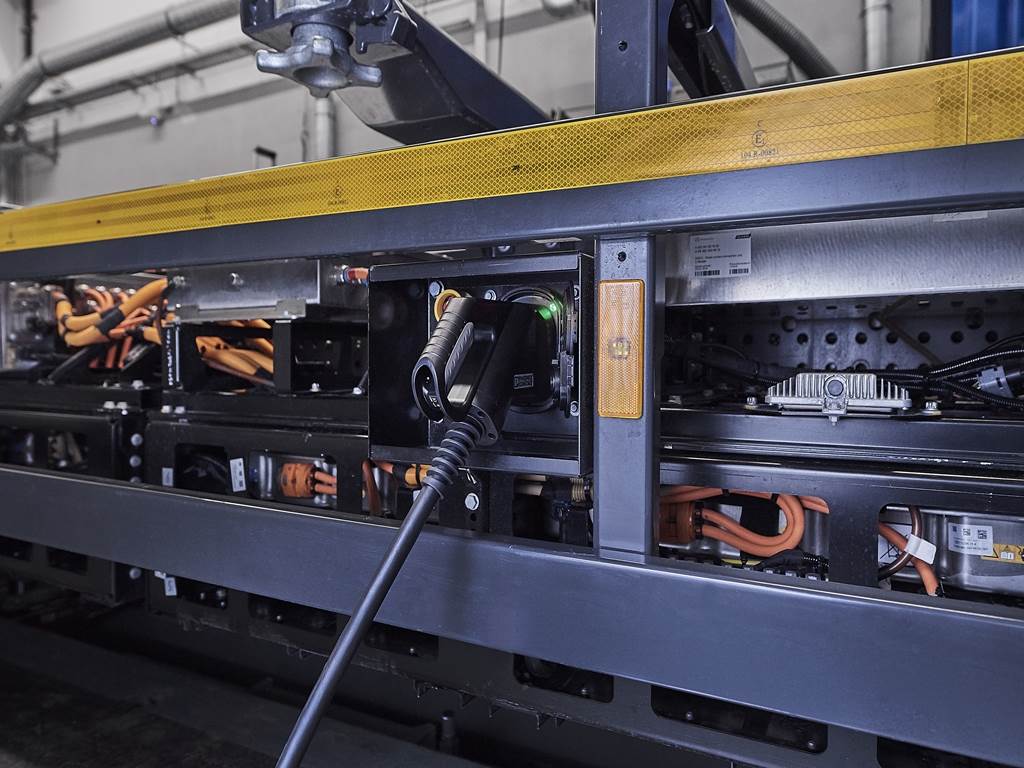
The ten customers (companies) that are participating in the fleet test are from a variety of sectors in Germany and Switzerland. The companies are Dachser, Edeka, Hermes, Kraftverkehr Nagel, Ludwig Meyer, pfenning logistics, TBS Rhein-Neckar and Rigterink from Germany and Camion Transport and Migros from Switzerland.
According to Mercedes-Benz Trucks these customers distribute goods via the road network – but in very different sectors and categories. The palette ranges from groceries to building supplies and raw materials. The vehicles being used by customers for tasks that would otherwise be completed by vehicles with conventional diesel engines, and the range of requirements means that the vehicles are fitted with a variety of bodies. According to the need of the customers, refrigerated box bodies, tankers or tarpaulin sides are used.
The drivers of the eActros are trained specially to work with the vehicle. The pilot customers will be testing the vehicles in real-life operations for a period of 12 months, after which the trucks will go out to a second round of customers for a further 12 months. "This will enable us to satisfy the many requests we have had from customers and to gain even more insight", according to Stefan Buchner. "Our aim is to achieve series-production and market maturity for a range of economically competitive electric trucks for use in heavy-duty transport operations with effect from 2021."
200km range with performance and payload
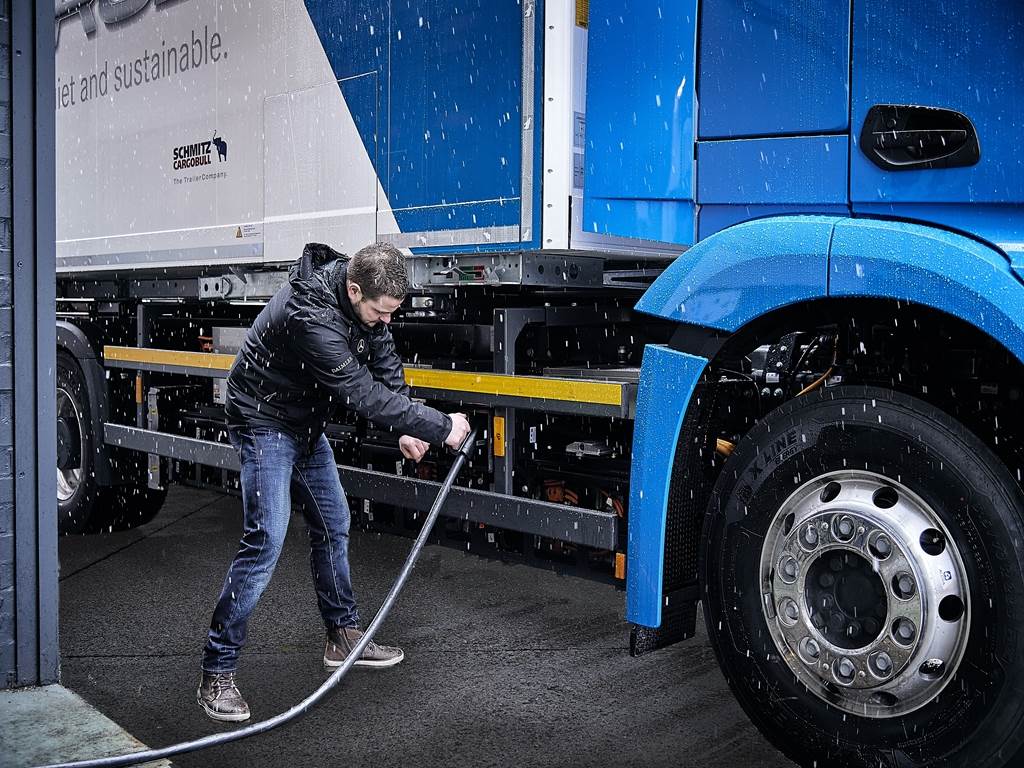
The basis for the eActros is provided by the frame of the Actros. However, the vehicle architecture has been configured specifically for an electric drive system, with a high proportion of specific components. The drive axle, for instance, is based on the ZF AVE 130 that has already proved its worth as a low-floor portal axle in hybrid and fuel-cell buses from Mercedes-Benz and is now being fundamentally revised for the eActros. The axle housing has been completely redesigned and is mounted in a significantly higher position, thereby increasing the ground clearance to more than 200mm. The drive system comprises two electric motors located close to the rear-axle wheel hubs. These three-phase asynchronous motors are liquid-cooled and operate with a nominal voltage of 400 volts. They generate an output of 125kW each, with maximum torque of 485Nm each. The gearing ratios convert this into 11,000Nm each, resulting in driving performance on a par with that of a diesel truck.
The maximum permissible axle load stands at the usual 11.5 tonnes. The energy for a range of up to 200km is provided by two lithium-ion batteries with an output of 240kWh. These have already proved their worth in service with EvoBus – so can no longer be considered as prototypes. "Synergies within the Group like these allow us to pool our experiences, shorten development times and, of course, also save costs," said Stefan Buchner.
The batteries are accommodated in eleven packs – three of located in the frame area, the other eight are underneath. The company states for safety reasons, the battery packs are protected by steel housings. In the event of a collision, the mountings give way and deform, for diverting the energy past the batteries without damaging them. The high-voltage batteries do not just supply energy to the drive system, but to the vehicle as a whole. Ancillary components such as the air compressor for the braking system, the power steering pump, the compressor for the cab air-conditioning system and, where relevant, the refrigerated body, are also all electrically powered. The discharged batteries can be fully recharged within three to eleven hours, assuming a realistic charging capacity of 20 to 80kW from a mobile charging device at a fleet depot. The charging standard used is the Combined Charging System, CCS. The LV on-board network made up of two conventional 12-volt batteries is charged from the high-voltage batteries via a DC-DC converter. This ensures that all relevant vehicle functions such as lights, indicators, brakes, air suspension systems and cab systems remain operational in the event of the high-voltage network failing or being switched off. The high-voltage network can only be activated if both LV (low-voltage) batteries are charged.
Subsidies support sustainable development
The development and testing of the heavy-duty electric trucks in distribution transport forms part of the project ‘Concept ELV’, which is funded to varying extents by Germany's Federal Ministry for the Environment (BMUB) and Federal Ministry of Economic Affairs and Energy (BMWi) to the tune of around 10 million euros (Rs 76 crore) altogether. The areas covered by the funding plan include the investigation of the complex challenges involved in the development, assembly and operation of electric trucks. These include the use of high voltages (>400V), high currents (up to 1000A), battery technology (price, weight, durability, service life, charging time), range and energy requirements, charging infrastructure and logistics concepts, safety requirements, summer and winter viability as well as questions about customer acceptance of the trucks.
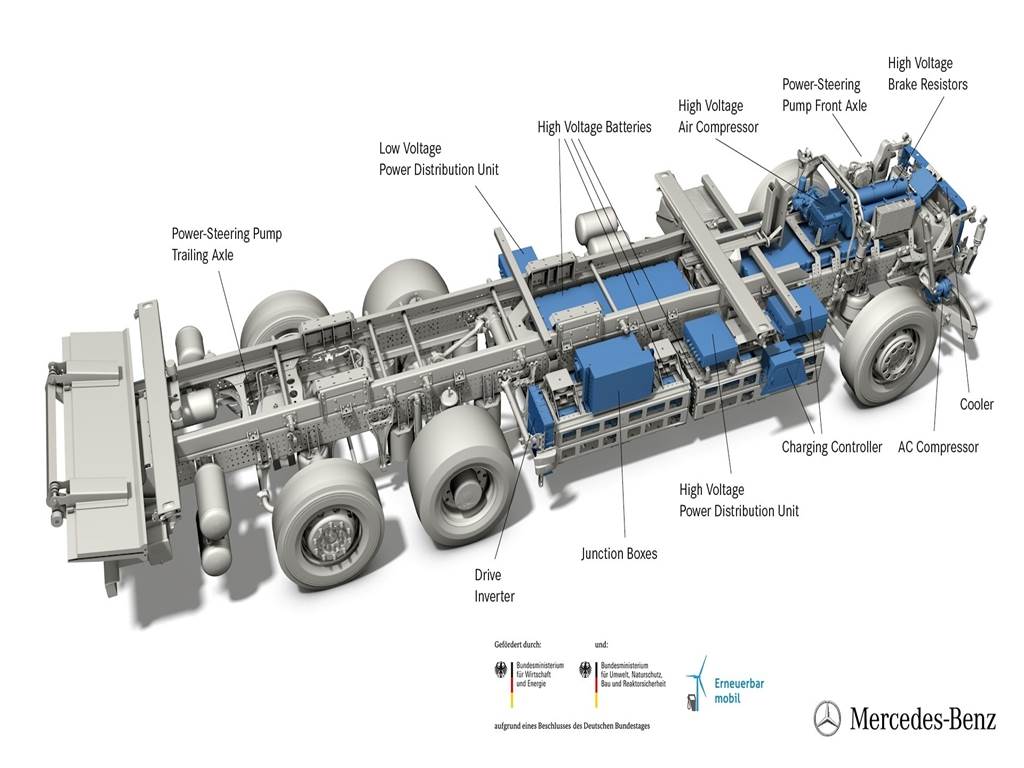
According to Mercedes-Benz Trucks the customer innovation fleet will be tested on road until at least mid-2020. Its aim is to establish the energy requirements for a series of specific application scenarios as well as the economic efficiency of the electric trucks, and to compare the environmental performance of the electric trucks with that of diesel trucks in a full life cycle assessment. The findings of this research work will find their way back into the vehicles in the form of on-going optimisation measures. The results will be published, giving potential users the opportunity to optimise their route planning or to develop new business models for their logistics processes.
Daimler’s electric commercial vehicles
Blazing the trail for all-electric light-duty trucks is the eCanter from the company's Asian brand Fuso, which was launched last year as the first series-production electric truck. The eVito from Mercedes-Benz has also been available to order since November 2017 and will be going out to customers from the second half of this year. Next in line are the all-electric Citaro city bus and the eSprinter.
Also read: Daimler launches Fuso e-Canter, first all-electric truck in series production
First all-electric Fuso trucks delivered to logistics companies in Europe
Fuso eCanter: Production begins of world’s first series all-electric LCV in Europe
RELATED ARTICLES
ZF to display next-gen e-axle for low-floor city buses at Busworld Turkiye 2024
The AxTrax 2 LF is available with a continuous output of up to 360 kW and a peak torque of up to 37,300 Nm.
Daimler Buses and BMZ Poland to develop next-gen NMC4 electric bus batteries
The new battery generation NMC4 – succeeding the current NMC3 technology – will combine high energy density, resulting i...
Netradyne expands UK operations via partnership with Intelex
The collaboration between Netradyne and Intelex marks a substantial leap forward in advancing road safety and fleet mana...





 By Autocar Pro News Desk
By Autocar Pro News Desk
 23 Feb 2018
23 Feb 2018
 10238 Views
10238 Views




